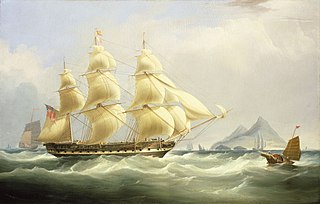Citations and references
Citations
- ↑ Hackman (2001), p. 275.
- ↑ Phipps (1840), p. 158.
- ↑ Wadia (1986), p. 343.
- ↑ Hackman (2001), p. 333.
- 1 2 Colledge & Warlow (2006), p. 134.
- ↑ Low (1877), p. 583.
- ↑ Gibson-Hill (1954), p. 133, Fn#4.
References
- Colledge, J. J.; Warlow, Ben (2006) [1969]. Ships of the Royal Navy: The Complete Record of all Fighting Ships of the Royal Navy (Rev. ed.). London: Chatham Publishing. ISBN 978-1-86176-281-8.
- Gibson-Hill, C.A. (1954). "The Steamers employed in Asian Waters, 1819-39". Journal of the Malayan Branch of the Royal Asiatic Society. 27 (1): 120–162.
- Hackman, Rowan (2001). Ships of the East India Company. Gravesend, Kent: World Ship Society. ISBN 0-905617-96-7.
- Low, Charles Rathbone (1877). History of the Indian Navy: (1613-1863). R. Bentley and son.
- Phipps, John (1840). A Collection of Papers Relative to Ship Building in India ...: Also a Register Comprehending All the Ships ... Built in India to the Present Time ... Scott.
- Wadia, R. A. (1986) [1957]. The Bombay Dockyard and the Wadia Master Builders. Bombay.

